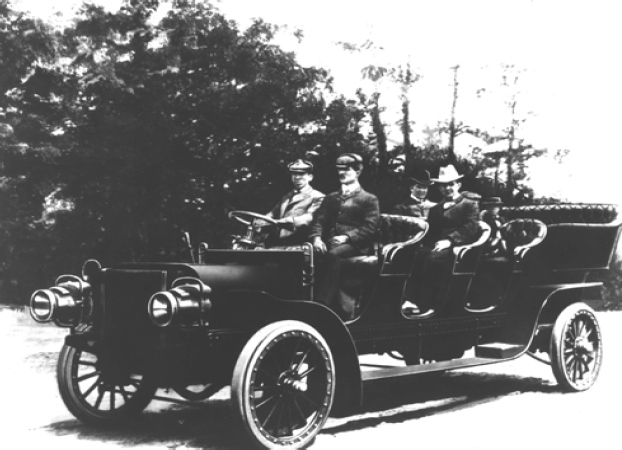1900-1909


1900 - The early years of this century were years full of invention, the revolutionary effects of which we're still feeling today.
During this same time, John Mack and his brothers were hard at work setting the pace for an entirely new mode of commercial transportation. In the spirit of these other great pioneers, John Mack had a vision -- to produce the most durable and powerful heavy-duty trucks and engines in the world. The innovative designs and products he created began a tradition of innovation that has continued to this day. From the second Mack vehicle on, Mack Engines were introduced establishing the tradition of "balanced design" (in which the integration of the powertrain and vehicle design maximize performance) that continues today.
John Mack had already spent years researching and experimenting with his own design for a motorized wagon by the time he and his brothers opened their first bus manufacturing plant in 1900. The work paid off the same year, when the brothers introduced their first successful vehicle -- a 40-horsepower, 20-passenger bus. The Mack bus, built for sightseeing concessionaire Isaac Harris, operated in Brooklyn's Prospect Park for eight years before being converted into a truck. The success and acceptance of "Old No. 9" initiated a history of truck development unparalleled in the industry, and established a company whose reputation for tough, high-quality products has since become "part of the language."
The brothers were also doing automotive repairs at this time.
Mack used a slogan in advertisements for many years, especially when we produced buses..."The first Mack was a bus and the first bus was a Mack."
The actual inspiration for building a large commercial motor vehicle truck is reported to have occurred when Jack Mack was invited for a ride in a neighbor's new 2-cylinder Winton automobile. The neighbor was Theodore Heilbron, captain of William Randolph Hearst's private yacht, who lived at 33 Third Avenue, a block from the Mack shop on Atlantic Avenue. The ride most likely took place in the fall, when the new 1902 Winton touring car was introduced. The superior performance of the new Winton soon had the two automobilists in an enthusiastic mood. And it was not long before their conversation centered on the future developments of gasoline engines and motor vehicles.
Mack Brothers Company is incorporated in New York with John M., Augustus F., and William C. Mack as the directors.
1900-1960 - Mack produced many different types and models of buses from the first Mack produced in 1900 until 1960. Over 22,000 units were built as school, transit, suburban, or intercity buses. Buses were also used as mobile post offices, sheriff's units, or medical x-ray vehicles, both for hospital type x-rays or track x-rays in subway systems.






1905 - The acceptance of Mack as a rugged, heavy-duty truck led to the selection in 1905 of Allentown, Pennsylvania as the home of the main manufacturing operations of the new Mack Brothers Motor Car Company.
Mack Brothers Motor Car Company is incorporated in Lehigh County, Pennsylvania. Brother Joseph Mack becomes a stockholder.
Mack was one of the first manufacturers to mount a cab directly over the engine, which increased driver visibility and maneuverability, particularly on crowded city streets. The "Manhattan" seat-over-engine model was introduced in 1905.
Gus Mack patented a constant mesh feature that protected gears from being damaged or stripped by inexperienced drivers. His brother, Jack Mack, patented the selective feature that allowed drivers to immediately shift from high to low, and vice versa, without going through intermediate speeds. Other manufacturers incorporated these patented Mack designs into their vehicles for several years.
Mack built rail cars and locomotives from 1905 until 1930. In the period 1951 through 1954, the company built 10 forward control diesel rail cars.